AMBIONET: A Model for Strengthening National Agricultural Research Systems
CIMMYT E-News, vol 3 no. 6, June 2006
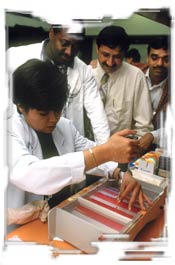 A USAID-funded study by Rutgers economist Carl Pray concludes that present and future impacts of the Asian Maize Biotechnology Network (AMBIONET)—a forum that during 1998-2005 fostered the use of biotechnology to boost maize yields in Asia’s developing countries—should produce benefits that far exceed its cost.
A USAID-funded study by Rutgers economist Carl Pray concludes that present and future impacts of the Asian Maize Biotechnology Network (AMBIONET)—a forum that during 1998-2005 fostered the use of biotechnology to boost maize yields in Asia’s developing countries—should produce benefits that far exceed its cost.
Organized by CIMMYT and funded chiefly by the Asian Development Bank (ADB), AMBIONET included public maize research institutions in China, India, Indonesia, the Philippines, Thailand, and Vietnam. “Despite the small investment—about US$ 2.4 million from ADB and US$ 1.3 million from CIMMYT—the network was successful in increasing research capacity, increasing research output, and initiating the development of technology that should benefit small farmers and consumers,” Pray says.
Benefits already seen in the field, with more to come
Pray estimates that farmers in Thailand and Southern China are already gaining nearly US$ 200,000 a year by sowing downy-mildew-resistant hybrids from the project. Pray’s future projections are much more dramatic. An example is drought tolerant maize: if such varieties are adopted on just a third of Asia’s maize area and reduce crop losses by one-third, farmers stand to gain US$ 100 million a year. Furthermore, in India AMBIONET has improved knowledge, capacity, and partnerships with private companies; a 1% increase in yield growth from this improvement would provide US$ 10 million per year, according to Pray.
Emphasis on applied work pays off
AMBIONET’s applied approach stressed formal training and attracted Asian researchers to work on maize germplasm enhancement and breeding. This included graduate students, scientists who switched from an academic to an applied-research focus, and advanced-degree scientists with experience in DNA markers and mapping for maize. Many noted that the partnering of molecular geneticists with breeders strengthened their interactions and the exchange of expertise. The project also boosted funding for maize breeding research. Several AMBIONET labs used project money to leverage significant institutional and government grants. Major research programs emerged from AMBIONET in India and China.
In a 2003 interview, Shihuang Zhang, leader of a project team at the Chinese Academy of Agricultural Sciences’ (CAAS) Institute of Plant Breeding, said: “AMBIONET came along at the ideal time for us. We were able have some of our young people trained and start our lab. Then in 1998 and 1999, China changed the way research was funded. We…were able to get big projects for molecular breeding.” The CAAS group used the initial money, equipment, training, and advice from AMBIONET to start the fingerprinting, mapping, and a markers lab, as well as to hire leading national maize breeding and molecular genetics experts. According to Pray, this eventually converted the group into China’s major maize molecular breeding and enhancement program.
Region-wide sharing
Benefits were not confined just to individual labs, as groups shared knowledge and resources across borders. The Indonesian team, for example, sent two young scientists for extended training in the laboratory of B.M. Prasanna, at the Indian Agricultural Research Institute in New Delhi. Veteran Indonesian maize breeder Firdaus Kasim reported this to be extremely useful: “Prasanna showed our scientists how to do downy mildew and genetic diversity research. He was a very good teacher. After they came back they made a lot of progress.” Prasanna also provided lines that the Indonesian trainees fingerprinted in diversity studies and 400 primers (markers) for downy mildew resistance.
Lines, data, and markers from AMBIONET are in use region-wide. For example, sugarcane mosaic virus was identified as a serious constraint in several countries, and partners are using resistant lines developed under AMBIONET. Based on information from diversity studies conducted under the project, Vietnamese researchers are developing hybrids that resist lodging and are drought tolerant.
A regional program that worked
Research projects provided the focal point for AMBIONET, with training activities, annually meetings, and the technical backstopping contributing to the programs’ success. “The combination of collaboration, cooperation, and competition…was impressive,” says Pray, in the study’s closing statement. “This is the way good, collaborative research is supposed to work.”
For more information contact Jonathan Crouch (j.crouch@cgiar.org)
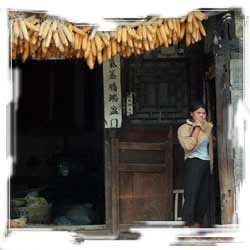 The demand for maize in Asia is expected to skyrocket in the next two decades, driven primarily by its use for animal feed. In the uplands of seven Asian countries, however, demand is also increasing in the farming households who eat the maize crops they grow. CIMMYT and the
The demand for maize in Asia is expected to skyrocket in the next two decades, driven primarily by its use for animal feed. In the uplands of seven Asian countries, however, demand is also increasing in the farming households who eat the maize crops they grow. CIMMYT and the 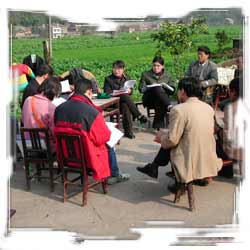
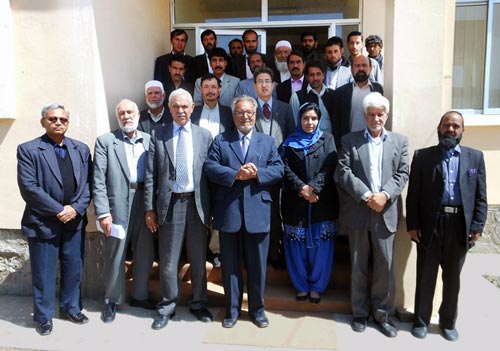 CIMMYT, with support from the Australian Centre for International Agricultural Research (ACIAR), has been working on maize in Afghanistan for more than ten years, and has contributed to the release—led by the Agricultural Research Institute of Afghanistan (ARIA)—of four maize varieties. Historically, the national research and seed systems have not been as proactive for maize as they have for wheat. However, recognizing that maize can be an effective contributor to overall food production, the recent past has seen efforts to give maize its due importance as a food crop in Afghanistan. To this end, the first ARIA-CIMMYT maize workshop was held at the ARIA conference hall in Kabul on 30 April and 01 May 2012, with the aims of further systematizing maize research in the country and coordinating the efforts of stakeholders.
CIMMYT, with support from the Australian Centre for International Agricultural Research (ACIAR), has been working on maize in Afghanistan for more than ten years, and has contributed to the release—led by the Agricultural Research Institute of Afghanistan (ARIA)—of four maize varieties. Historically, the national research and seed systems have not been as proactive for maize as they have for wheat. However, recognizing that maize can be an effective contributor to overall food production, the recent past has seen efforts to give maize its due importance as a food crop in Afghanistan. To this end, the first ARIA-CIMMYT maize workshop was held at the ARIA conference hall in Kabul on 30 April and 01 May 2012, with the aims of further systematizing maize research in the country and coordinating the efforts of stakeholders.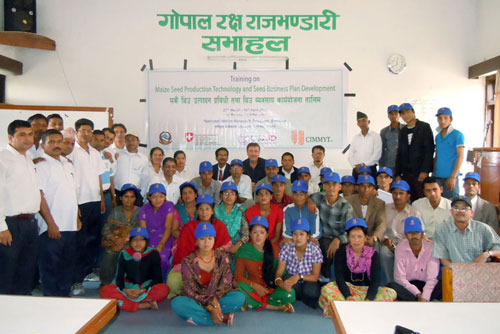
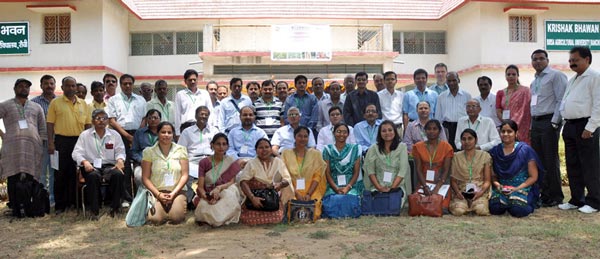
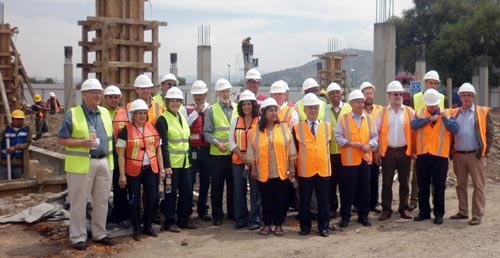
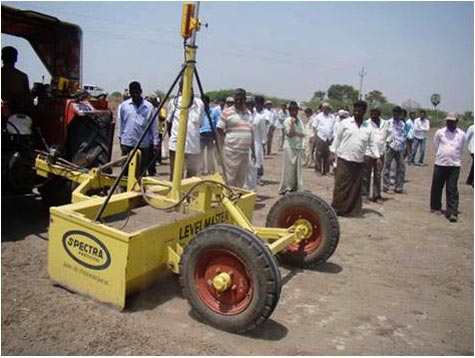 Discussions covered laser leveling, direct-seeded rice, zero-till maize, conservation agriculture machinery, the turbo seeder for residue management, weed management, pest management, cultivar choices, potential diversification options using resource-conserving technologies, and the potential for diversification and the adoption of water-wise practices to make more efficient and productive use of irrigation water. The operation and benefits of conservation agriculture machinery, including the laser land leveler, zero-till multi-crop planter, and turbo seeder, were demonstrated and explained. Farmers who have adopted the technologies shared their views and encouraged others to adopt.
Discussions covered laser leveling, direct-seeded rice, zero-till maize, conservation agriculture machinery, the turbo seeder for residue management, weed management, pest management, cultivar choices, potential diversification options using resource-conserving technologies, and the potential for diversification and the adoption of water-wise practices to make more efficient and productive use of irrigation water. The operation and benefits of conservation agriculture machinery, including the laser land leveler, zero-till multi-crop planter, and turbo seeder, were demonstrated and explained. Farmers who have adopted the technologies shared their views and encouraged others to adopt.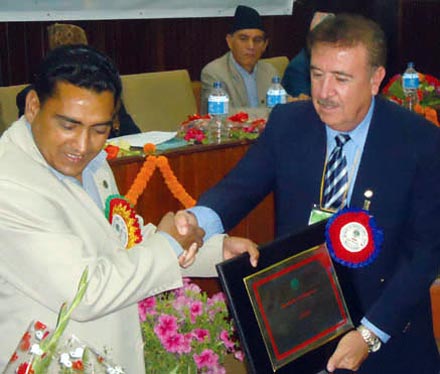 Receiving the prize on behalf of CIMMYT, Nepal country representative Guillermo Ortiz-Ferrara thanked the Society for the recognition. “On behalf of the director general of CIMMYT, Dr. Thomas Lumpkin, the center’s management, and colleagues who have been based in Nepal and the region for more than 26 years, we thank SAS-N for this great honor,” he said. “I would like to give special thanks to the government of Nepal and the MoAC for hosting CIMMYT’s regional office. Finally, we thank the many government and non-government organizations for their long-standing partnership and collaboration.”
Receiving the prize on behalf of CIMMYT, Nepal country representative Guillermo Ortiz-Ferrara thanked the Society for the recognition. “On behalf of the director general of CIMMYT, Dr. Thomas Lumpkin, the center’s management, and colleagues who have been based in Nepal and the region for more than 26 years, we thank SAS-N for this great honor,” he said. “I would like to give special thanks to the government of Nepal and the MoAC for hosting CIMMYT’s regional office. Finally, we thank the many government and non-government organizations for their long-standing partnership and collaboration.”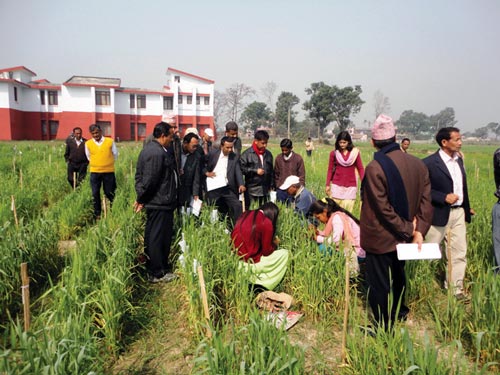 A training program on wheat participatory variety selection (PVS) was held in Nepal during 28-29 February 2012. Organized by the National Wheat Research Program (NWRP), Bhairahawa, Nepal Agriculture Research Council (NARC) and CIMMYT, the event attracted 17 scientists, technical officers and seed technicians from NARC’s research stations and private seed companies. The two-day training program focused on current challenges of wheat breeding and production in Nepal, wheat diseases, and participatory selection of varieties.
A training program on wheat participatory variety selection (PVS) was held in Nepal during 28-29 February 2012. Organized by the National Wheat Research Program (NWRP), Bhairahawa, Nepal Agriculture Research Council (NARC) and CIMMYT, the event attracted 17 scientists, technical officers and seed technicians from NARC’s research stations and private seed companies. The two-day training program focused on current challenges of wheat breeding and production in Nepal, wheat diseases, and participatory selection of varieties.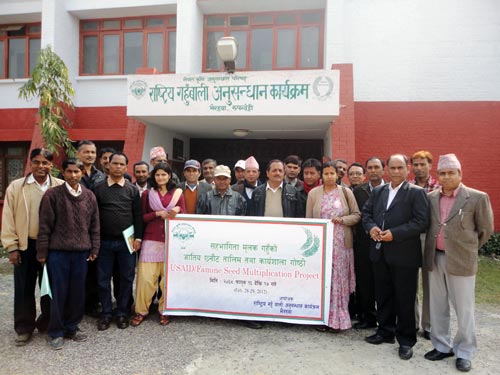 NARC scientists SR Upadhyay and NR Gautam explained the steps of participatory selection and participants scored varieties in the mother trial.
NARC scientists SR Upadhyay and NR Gautam explained the steps of participatory selection and participants scored varieties in the mother trial.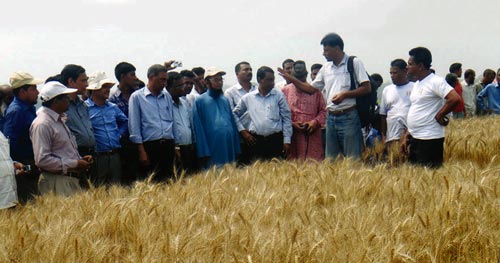
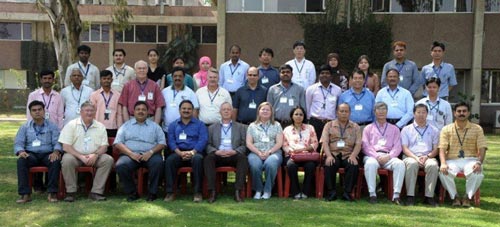
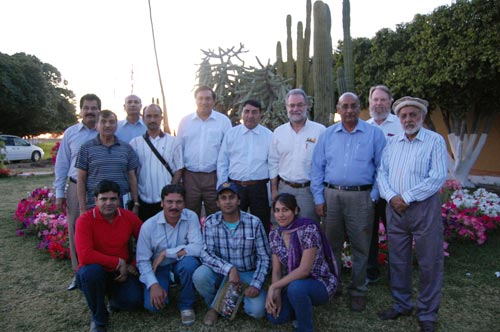 For some attendees, the unveiling of the new Norman E. Borlaug statue at CENEB was particularly poignant. It was a young Pakistani researcher who, in 1961, selected the variety that later became known asMexipak; a high-yielding, white grain wheat that became one of the mega-varieties that launched the Green Revolution. In 1966, Pakistan imported 41,000tons of Mexipak seed from Mexico – one of the biggest seed imports in history. Quarantine restrictions would make this a difficult task today, but it is estimated thatthis large-scale mission saved one million people from starvation and famine during the Green Revolution.
For some attendees, the unveiling of the new Norman E. Borlaug statue at CENEB was particularly poignant. It was a young Pakistani researcher who, in 1961, selected the variety that later became known asMexipak; a high-yielding, white grain wheat that became one of the mega-varieties that launched the Green Revolution. In 1966, Pakistan imported 41,000tons of Mexipak seed from Mexico – one of the biggest seed imports in history. Quarantine restrictions would make this a difficult task today, but it is estimated thatthis large-scale mission saved one million people from starvation and famine during the Green Revolution.